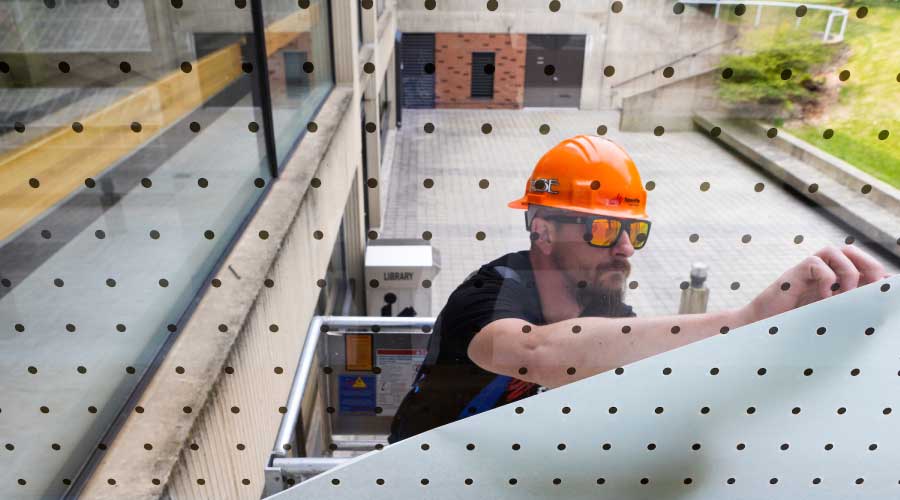How Windows Help Meet Code
Imagine this scenario: A year from now, you are sitting in an integrated design charrette, talking with your architect and engineer about all the possibilities for how your company's new headquarters might save energy and comply with increasingly strict energy codes. Your state has decided to be one of the early adopters of the 2010 version of ASHRAE 90.1, and your city is one of the first in the country to agree that the new green building code, ASHRAE 189.1, should govern all new buildings. What's more, your boss wants a LEED Platinum certification.
When the discussion turns to windows, the architect may try to gloss over your criteria for the windows products. It will be up to you to immediately steer the conversation back to windows selection to make sure the appropriate amount of time is spent discussing how window selection can affect HVAC size and lighting design.
Windows can have a profound effect on the energy performance of a building, as well as a building's ability to comply with energy codes. And energy codes are becoming more rigorous. For example, buildings that comply with the 2010 version of ASHRAE 90.1 are expected to be between 25 and 30 percent more efficient than the 2004 version of the code, say experts.
Window-to-Wall Ratio Decrease
To achieve those savings, the standard takes aim at windows in one of the more controversial parts of the new version of the updated standard. The 2010 version of the standard, due early next year, will decrease the allowable windows-to-wall ratio from 40 percent in the 2007 version of the standard to 30 percent if facility managers choose the prescriptive compliance option. The rationale for this new "fenestration/wall ratio" standard is that windows are generally viewed as an energy sieve, not a source of energy savings.
"From an energy standpoint, windows are holes when compared to the typical wall cross section," says Eric Seaverson, manager of restoration services with engineering firm StructureTec. "The R-value of windows is significantly lower than average wall systems. And this should be considered when addressing the energy efficiency of the building."
Of course, neither facility managers nor occupants look at windows simply as holes in the wall. And because no one wants to work, learn, or heal in a windowless box, finding a balance between energy efficiency, occupant comfort and code compliance becomes no simple task.
One way to do that, says Jim Benney, executive director of the National Fenestration Ratings Council, is to choose the trade-off or performance options for code compliance when working with designers on a new building. Understanding why requires a brief look at each compliance option.
Compliance Options
The prescriptive option for compliance gives very detailed and specific standards that must be met for each building system. If any part of a building doesn't achieve its standard, the building is non-compliant. For windows, based on climate zone, these metrics include solar heat gain coefficient (SGHC), visible light transmittance (VT) and U-factor.
The advantage of the prescriptive method is that it's very cut-and-dry, with little need for complicated modeling or calculations. The disadvantage, though, is that it doesn't explicitly consider how building systems work together.
The trade-off method, especially as it applies to the building envelope, allows facility managers to miss one prescriptive requirement if they can show that it's made up in another area of the building's envelope. If the facility doesn't meet the fenestration-to-wall ratio, for example, a higher wall efficiency measured in terms of R-value could make up for it. The trade-off method is regarded as complicated and calculation-intensive, but there are software tools, like the Department of Energy's COMcheck (www.energycodes.gov/comcheck/download.stm), that can help. COMcheck supports both ASHRAE 90.1 and the International Energy Conservation Code.
The third choice, the performance option for compliance, looks more holistically at a building's energy performance across all building systems. Whole-building energy performance is modeled using various energy simulation software packages, and compared with the 90.1 standard on a whole-building-energy-use basis for climate zone and building type.
"Prescriptive requirements are usually more strict than performance requirements," says Benney. "Under performance compliance, window performance is part of the overall envelope."
This means, says Benney, if facility managers work with their designers and engineers to consider carefully how to integrate daylighting and how that strategy will reduce HVAC and electric lighting loads, more windows may actually result in a much more energy-efficient building than sticking with the low fenestration-to-wall ratio mandated in the prescriptive option. That's especially true as manufacturers continue to introduce better options for low-e glass, thermal stops and improved glazings.
"Always use the performance option if possible," says Benney. "That's more realistic to how buildings are built."
Related Topics:










